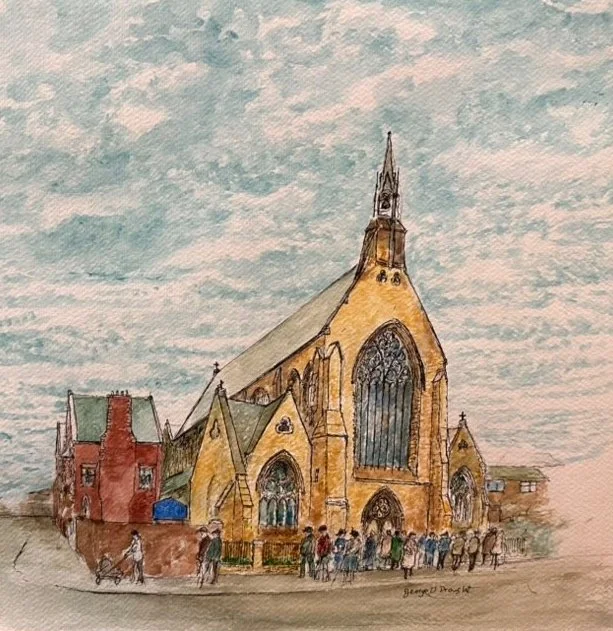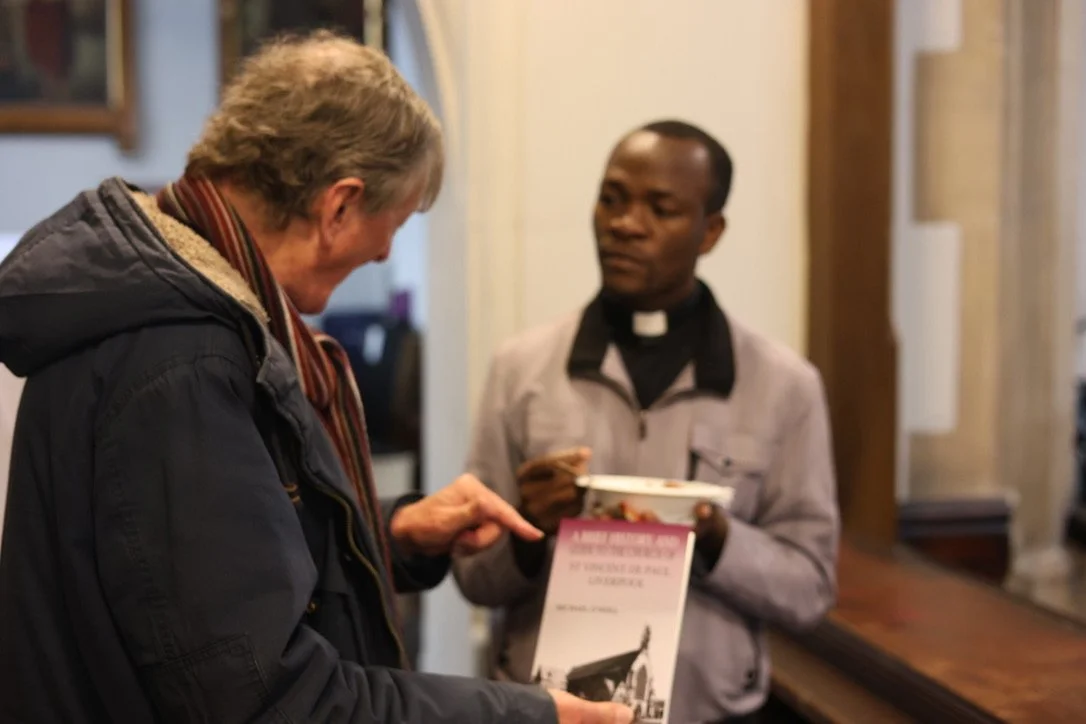
Our Church and History
In the early Nineteenth Century, the population of South Liverpool began to increase rapidly. More churches were needed to accommodate these growing numbers and, although the new St. Patrick's Church, which could accommodate 1,800 worshippers, opened in 1827, it was soon found necessary to open an overflow “chapel of ease” in the parish, closer to the South docks. A shed in Norfolk Street was fitted out as a chapel, serving an area of 7,600 souls and, in August 1852, was separated from St. Patrick's to form a Mission in its own right. Its first rector, Fr. Edward Walmsley, was appointed in 1852 and tragically died of Typhus a few months later, being buried in the crypt of St. Patrick's. He was succeeded by another curate of St. Patrick's, Fr. Bernard O'Reilly, who had survived the Typhus epidemic and was determined to replace the shed with a worthy place of worship for his congregation. A band of collectors was formed, who visited people's homes regularly; £6,000 was raised; a plot of land was purchased on the corner of St. Vincent Street (now Hardy Street); and the celebrated architect Edward Welby Pugin was engaged to design the new church, which was completed and opened in August 1857 and dedicated to St. Vincent de Paul.
Painting by George Drought
Today, St. Vincent's remains almost exactly as Pugin left it; his plans have been carefully preserved and the only part of the church not to be built was the octagonal Baptistery, an arch in the North West wall showing where it would have been. The interior of the church is a treasure house of work by the leading craftsmen of their day-windows by Hardman of Birmingham; stone carving by William Farmer and R. L. Boulton; the 1857 pipe organ by Gray and Davison who built the organ at Buckingham Palace the same year as they worked at St. Vincent's. The reredos is fronted by Chestnut floor panels from the Earl of Shrewsbury's home, Alton Towers. The priests' house, integral with the church, also by E. W. Pugin, is perhaps characterised by its squint window overlooking the Lady Chapel. The sacristy fittings are of exceptional quality. The church and priests' house are both listed buildings, Grade II* and Grade II respectively.
In 1873, Canon Bernard O'Reilly was appointed by the Pope as third Bishop of Liverpool, succeeding Alexander Goss. At first reluctant to accept the honour, he eventually agreed to the appointment, but insisted on being consecrated as bishop in St. Vincent's, of which he was so proud. Ten bishops participated in the ceremony. As Bishop of Liverpool until his death in 1894, he founded a further 42 new parishes in the Liverpool Diocese, together with the Seminary at Upholland (1883). His sculpted face can be seen to your right when entering the main door of the church. He would recognise the role of the parish today in its continuing outreach to the local community - as he put it himself, “If the people won't come from their homes to the chapel, the chapel must go amongst their homes to them”.
Michael O’Neill, author of St Vincent de Paul, Liverpool: A Brief History and Guide.

